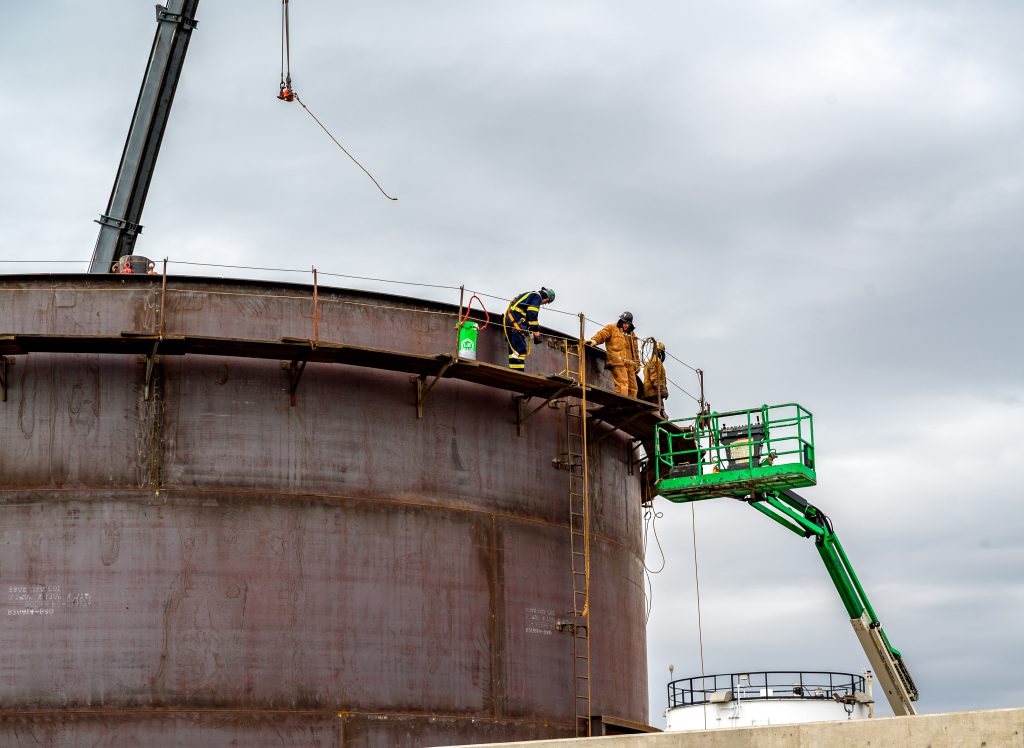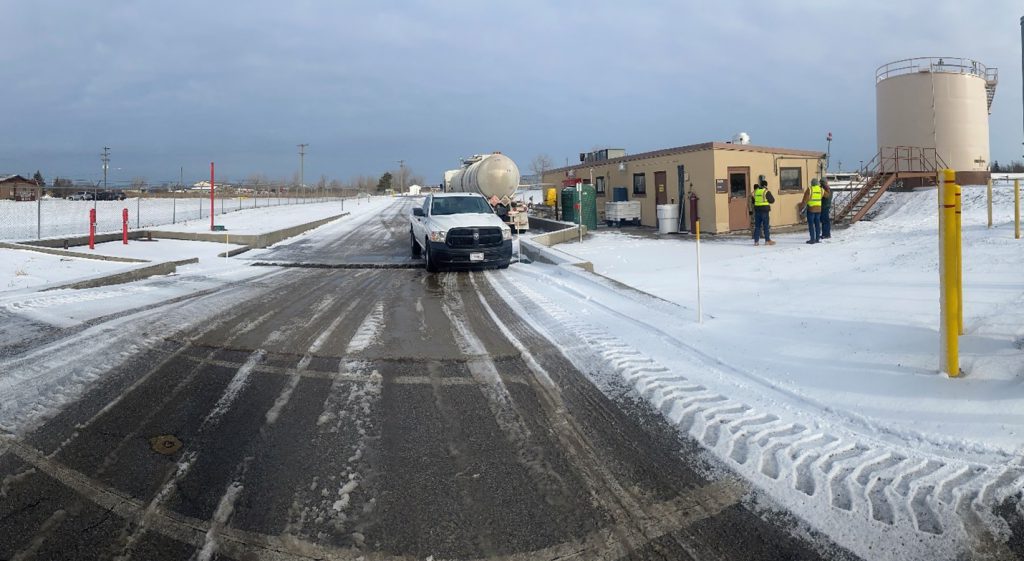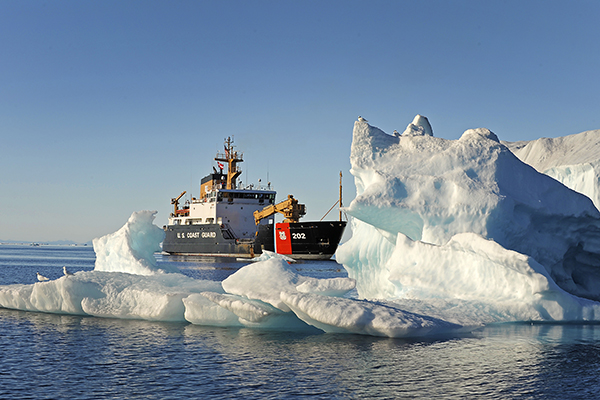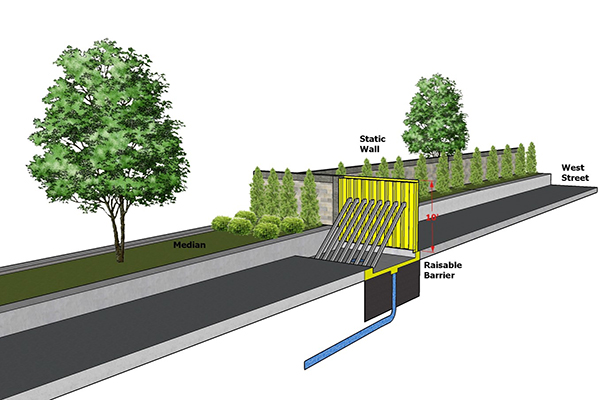By Christian Maiocco, P.E.
Established in 1946, and located just minutes from one of the nation’s most iconic landmarks, Niagara Falls Air Reserve Station, N.Y., has provided support to multiple war theaters in recent decades. The installation is home to the 914th Air Refueling Wing, a unit that provides a rapid global reach of air refueling capabilities in support of the U.S. Air Force. The base also previously housed the Bell Aircraft Corporation’s experimental aircraft Bell X-1, which would become the first aircraft to break the sound barrier.
In the early 1990s, Niagara Falls Air Reserve Station saw the construction of a new jet fuel storage complex that was comprised of two primary areas on the east and west sides in order to support two separate missions. Due to a mission changeover in the early 2000s, the system was left unused until a new air refueling mission returned to the station in 2017. This also coincided with the 914th Air Refueling Wing transitioning its fleet of C-130 Hercules aircraft to KC-135 Stratotankers. As a part of the aircraft transition for the future, the 914th Wing—along with Air Force Reserve Command (AFRC)—began a concurrent effort to revitalize the station’s 2-mi of fueling pipelines, aircraft refueling pits, fueling equipment, and nearly 5,000 barrels in fuel storage capacity.
With an urgent need for the entire system to be fully functioning by the end of 2023, AFRC contracted with the Louisville District of the U.S. Army Corps of Engineers and Pond-FSB A Joint Venture to provide design and construction support for the large-scale fuel system modernization effort.
To keep the work on track for completion, project stakeholders implemented a partnering relationship to meet the expedited timeline and pending deadline for a fully operational fueling system.

U.S. Air Force photo by Staff Sgt. Kelsey Martinez
THE RIGHT ENVIRONMENT
While setting an end goal is critical to the partnering relationship, it is not the only aspect. Partnering requires creating an environment to achieve the goal and nurturing it throughout. Many projects set out with well-defined parameters, only to fall short because the framework was not created to attain them. A project’s goals will not be met if those involved are not moving in the same direction.
To foster successful partnering, there is a series of key practices that teams can incorporate at the beginning of a project.
Accountability. As part of the design process, all stakeholders are expected to take responsibility for their portion of the work and complete it on time.
At Niagara Falls Air Reserve Station, the design team needed to meet an expedited schedule of six months for full design. The installation coordinated environmental permitting with the state of New York; Louisville District provided oversight and reviews; and AFRC provided information to support the design effort. All of these occurred in concert with little room for schedule delays and required setting clear benchmarks to hold each other accountable.
Partnering requires creating an environment to achieve the goal and nurturing it throughout.
Communication. Clear and consistent communication is paramount during the project lifecycle. During design, stakeholders held weekly situation report meetings to track project status, discuss future milestones or project requirements, and identify issues. Many of the meetings proved to be invaluable in discussing project issues in real-time and keeping action items on track. In addition to the discussion, meeting summaries were shared each week to document progress and resolutions.
An example of this communication rhythm paying dividends came when the presence of soil contaminants was identified. Through multiple meetings, the project team discussed options to address concerns. These included the decision to change the design approach from replacing the pipeline connecting two fueling sites to expanding an existing site by adding a new 10,000-barrel tank in order to address the eventual decommissioning of the contaminated site.
Throughout the course of the project, over 50 situation report meetings were held, highlighting the commitment to consistent communication as the project progressed.
Expectations. Clearly communicating and defining expectations at the beginning of a project is critical to achieving goals. As design began for the project at Niagara, the stakeholders noted in the project scope that the existing apron parking locations for the KC-135s did not meet Unified Facility Criteria for appropriate spacing during refueling operations. Wing leadership further expressed the importance of being able to refuel and perform de-icing operations in the same parking location without having to move aircraft. This would result in valuable time and efficiency for being able to meet mission requirements. In turn, the stakeholders evaluated the feasibility of this arrangement and noted that it could be accomplished by changing the fueling pit positions, which was already in the scope, to more optimal locations for the wing.
By expressing their expectation for how the system needed to operate, the stakeholders were able to understand the need; discuss the impacts in terms of cost, time, and feasibility; and ultimately, provide a major benefit through a minor change.
Transparency. Partnering hinges on trust. This can be especially difficult for teams that have never interacted together previously. A way that trust can be fostered is by allowing team members to express secondary goals they hope to achieve that may be parallel, but not in direct support of, the overall goal.
Remaining within budget and accomplishing scope while mitigating scope creep are common concerns that tend to be unmentioned in fear of appearing uncooperative or unsupportive of the overall goal. Transparency in a project team can help reduce the likelihood of stakeholders drifting toward self-preservation and help encourage necessary dialogue for potential solutions.
As a part of the project to add fuel storage capacity at Niagara, the team discovered that a requirement had been triggered with the state to provide new environmental measures to address the change.
After evaluating the change and impact, the design team discussed the scope change with Louisville District and collectively decided the best approach was to have the environmental measures installed separately and tracked concurrent to avoid being overlooked. By having transparent dialogue, a solution was presented that maintained the primary goal and stakeholder secondary goals while also sustaining the trust and partnership established at the beginning of the project.

SUCCESSFUL IMPLEMENTATION
The best place to start for implementing partnering is to collaborate with stakeholders in defining project goals. From there, highlight the steps necessary to achieving those goals, which can vary in detail depending on the type of work. For larger projects, consider adding a partnering facilitator to help lead partnering meetings.
At the transition point from design to starting construction on the fueling upgrades at Niagara Falls Air Reserve Station, the team of AFRC, Louisville District, and Pond-FSB participated in a facilitated one-day partnering meeting with the awarded contractor, Structural Associates Inc., to maintain the successful collaboration generated through design. Ultimately, to whatever degree partnering is utilized on a project, successful implementation will lead to successful outcomes for both design and construction.
Christian Maiocco, P.E., is Project Manager, Pond & Company; maioccoc@pondco.com.
More News from TME
-

The Northernmost Theater: A Crucial Frontier for National Security
With abundant natural resources and a critical geographic positioning, the Arctic continues to rise in importance to America’s strategic interests, requiring an ongoing evolution of military, economic, and diplomatic policy. -

Protecting Military Facilities From Flood Risks
As military installations across the nation face increasing flooding risks driven by climate change, understanding the types of floods, their causes, and available measures to mitigate risk can support better resiliency upgrade projects. -

Gaining Real-Time Water Leak Detection
At Devens Reserve Forces Training Area, advanced water meters are offering real-time monitoring of water systems and automated alerts, increasing the installation’s ability to identify leaks and make timely repairs.